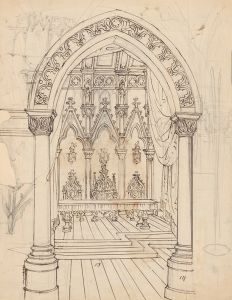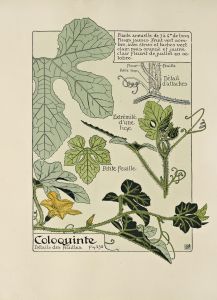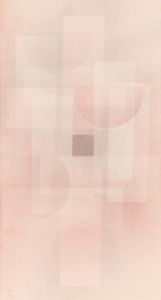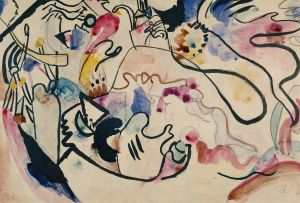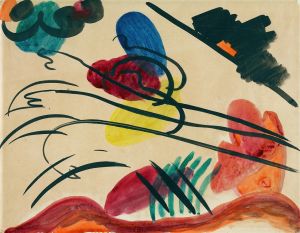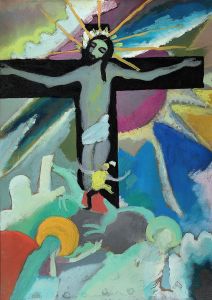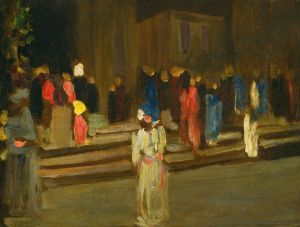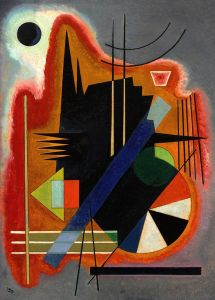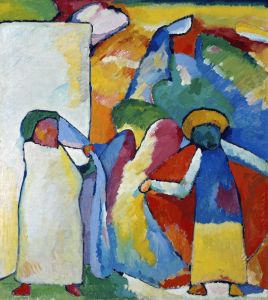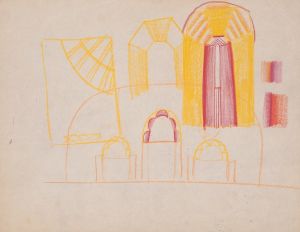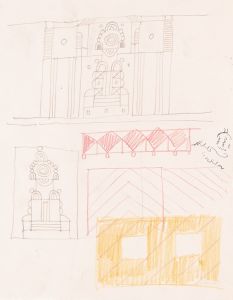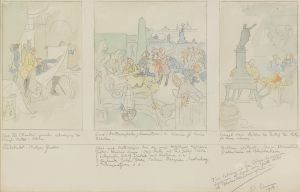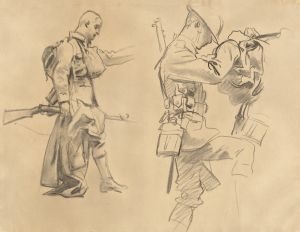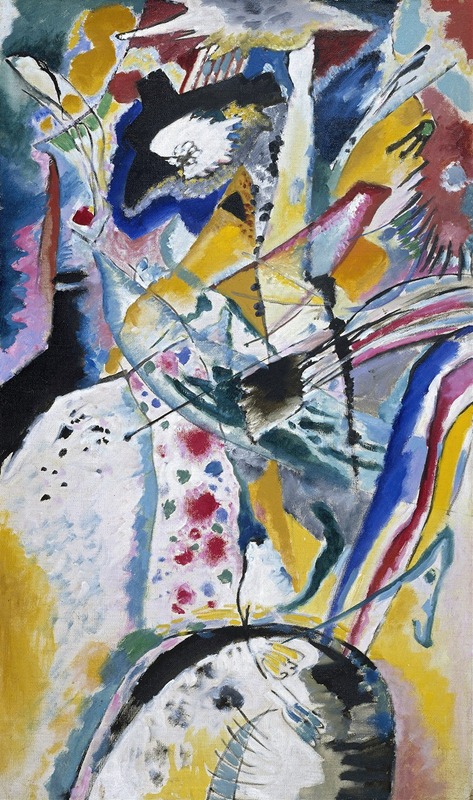
Large Study on a Mural for Edwin R. Campbell
A hand-painted replica of Wassily Kandinsky’s masterpiece Large Study on a Mural for Edwin R. Campbell, meticulously crafted by professional artists to capture the true essence of the original. Each piece is created with museum-quality canvas and rare mineral pigments, carefully painted by experienced artists with delicate brushstrokes and rich, layered colors to perfectly recreate the texture of the original artwork. Unlike machine-printed reproductions, this hand-painted version brings the painting to life, infused with the artist’s emotions and skill in every stroke. Whether for personal collection or home decoration, it instantly elevates the artistic atmosphere of any space.
Wassily Kandinsky, a pioneering figure in abstract art, created "Large Study on a Mural for Edwin R. Campbell" as part of his exploration into non-representational forms and colors. This work is associated with a series of murals Kandinsky designed for Edwin R. Campbell, an American industrialist and art patron, who was also a founder of the Chevrolet Motor Company. The murals were intended for Campbell's New York apartment and are significant examples of Kandinsky's mature style, which was characterized by bold colors and dynamic compositions.
Kandinsky's work during this period was heavily influenced by his theoretical writings on art, particularly his book "Concerning the Spiritual in Art," published in 1911. In this text, Kandinsky articulated his belief that art should transcend mere representation and evoke deeper emotional and spiritual responses. He argued that colors and forms could be used to express the artist's inner feelings and ideas, much like music does through sound.
"Large Study on a Mural for Edwin R. Campbell" exemplifies Kandinsky's approach to abstraction. The composition is a vibrant interplay of geometric shapes and swirling forms, with a palette that includes vivid blues, reds, yellows, and greens. These elements are arranged in a way that suggests movement and energy, inviting viewers to engage with the painting on an emotional level rather than trying to discern a literal subject matter.
The commission for Campbell's murals came at a time when Kandinsky was deeply involved with the Bauhaus, a revolutionary art and design school in Germany where he taught from 1922 to 1933. His work at the Bauhaus further developed his ideas about the synthesis of art and architecture, and the role of art in everyday life. The murals for Campbell can be seen as an extension of these ideas, integrating art into the living space and making it an integral part of the environment.
Kandinsky's collaboration with Campbell is also notable for its reflection of the growing interest in modern art among American collectors during the early 20th century. This period saw a burgeoning appreciation for avant-garde European artists, and patrons like Campbell played a crucial role in introducing these new ideas to the United States.
While specific details about the execution and installation of the murals are limited, the project underscores Kandinsky's commitment to exploring the possibilities of abstract art and its potential to transform spaces. The "Large Study on a Mural for Edwin R. Campbell" remains an important work in Kandinsky's oeuvre, illustrating his innovative use of color and form to create compositions that resonate on a purely abstract level.
In summary, "Large Study on a Mural for Edwin R. Campbell" is a testament to Wassily Kandinsky's pioneering role in the development of abstract art. Through his use of color, form, and composition, Kandinsky sought to evoke emotional and spiritual responses, challenging traditional notions of art and paving the way for future generations of artists.





